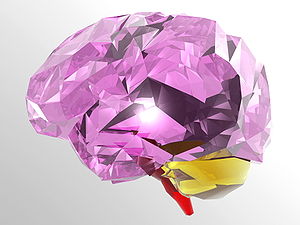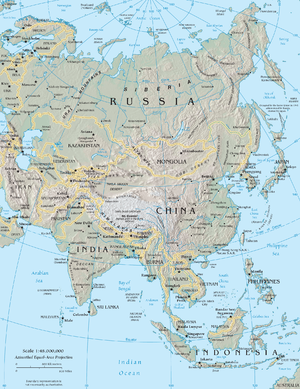In our country today, anxiety has passed depression as the number one mental health issue. As shown in the chart above, 18.1% of the US Adult population suffers from some sort of anxiety. Out of that population, 22.8% of the cases are classified as severe. Severe anxiety can result in not only feelings of heightened anxiety, but in panic attacks as well. The most used treatments revolve around medications which suppress the feelings of anxiety rather than dealing with any underlying causes for the anxiety.
Depression, whether it is one episode or recurring episodes, effects 6.9% of the population overall, and according to the National Institute of Mental Health, effects more females than males.
Depression can appear in different ways between the sexes, so in my opinion, it is debatable as to whether males suffer less depression. Male depression can exhibit in agitation, anger and frustration as well as somber mood and hopelessness. Unless a practitioner understands that, males may go untreated and are therefore not included in these statistics. Individuals with anxiety can also struggle with bouts of depression and vice versa.
How did we get to this place? In my opinion there may be several reasons. First, lack of personal identity is rampant in our society. We are taught that we are what we do. Whatever role we have, becomes who we are and when that role ceases, we become lost. We are told that a person has no value unless they are successful, nice looking, financially stable or hold a job with a distinguishable title. In order to achieve a feeling of worth and value, we tend to perform, work harder, do more and try our best to achieve that successful image. That lifestyle is very stressful and individuals tend to burnout after awhile.
Second, we are just too busy. People have sacrificed play time, rest time and face to face interaction with others for activities, social media and time in front of numerous screens. These screens, whether they be computers, iPads, or phones, tend to stimulate the brain in ways that interfere with good sleep patterns. especially if we look at them up until the time we go to bed.
Busyness interferes with our eating patterns as well. We catch a quick bite of something as we head out the door and eat it in the car on the way to dropping our kids off at school before work. We have traded the relatively peaceful breakfast, lunch and dinner at the family table for Starbucks and fast food. That takes a toll on what our bodies can handle.
So, how does food help us deal with anxiety? It helps to provide our brain with enough consistent glucose so it is able to function well. If we eat mostly or all carbohydrates at our meals, our brain has a good supply of glucose for 1.5 -2 hours after the meal. If we don't eat again for 4 or 5 hours, the glucose supply becomes low and our brain becomes concerned. According to Kristen Allot ND, "In order to continue to function well, the brain will tell the kidneys to release adrenaline in order to increase blood glucose. Although the brain now has some fuel, the amygdala has been stimulated by adrenaline. This can cause your concerns or irritations to become amplified into anxiety or anger." Usually, when adrenaline is released, there is a reason. We need it to function, to do something physically. When adrenaline is used to feed the brain, it is still in the system because it doesn't get used up with physical exertion and then contributes to anxiety levels.
It is interesting to understand that the symptoms of Anxiety or Anger are very similar to the signs for Hypoglycemia. Hypoglycemia can occur whenever our blood sugar levels drop. Often we think we have problems with anxiety, when we may not be eating enough protein with our meals, or eating often enough so that our brains have the fuel needed to function without adrenaline release. When a person eats at least 21 grams of protein with their main meals and eats at least every 4 hours, they should notice a decrease in anxiety. If meals cannot be eaten every 4 hours, then a snack with carbs and protein should be eaten in order to keep the body functioning well. Many of my clients notice a difference within 24 hours. Before modifying their eating habits, I often ask them to keep a food journal over 3-4 days. They note what they have eaten, when they have eaten and when their anxiety levels or anger issues increase. They often notice a change in their emotional health if they have gone two to four hours without eating and their previous meal was mostly carbohydrates.
Finally, if you have a snack before bed, just make sure it isn't sugary or full of carbohydrates. Again, give your body a dose of protein with your carbs and you may find that you sleep better.
What are some healthy protein sources? Quinoa has 11 grams of protein per half cup. Refried beans have 8 grams per half cup. A quarter cup of nuts has 8 grams of protein and 2 T of nut butter has the same. Seed butter, such as sunflower seed butter has 5 grams of protein per 2 T serving. Greek yogurt and pumpkin seeds are a good snack with plenty of protein as well as cottage cheese that has 12 grams per half cup. If you like eggs for breakfast, bear in mind that each egg only has 7 grams of protein so if you are shooting for 21 grams at breakfast, you either need 3 eggs or another source of protein with them. 3 ounces of wild fish, chicken, turkey, beef or pork will supply you with 21 grams of protein as well.
In closing, just a note. You don't see me adding soy to the list of healthy proteins. I don't recommend soy because it can create so many issues due to its estrogen content. Soy is not the best protein to eat, in my opinion. It is difficult to change your diet all at once, so give yourself some grace when starting a transition of this kind. You may find it difficult to begin to eat healthier so try one meal at a time. If you aren't a breakfast eater, try introducing the morning meal with a protein shake. These kinds of transitions need to fit into your lifestyle and food preferences or they don't work. The most important rule of thumb is to make sure you space your meals and snacks about 4 hours apart and make sure they contain at least 21 grams of protein for main meals and 6-7 grams of protein for snacks. You should see a drop in your anxiety level if you implement these simple practices.










